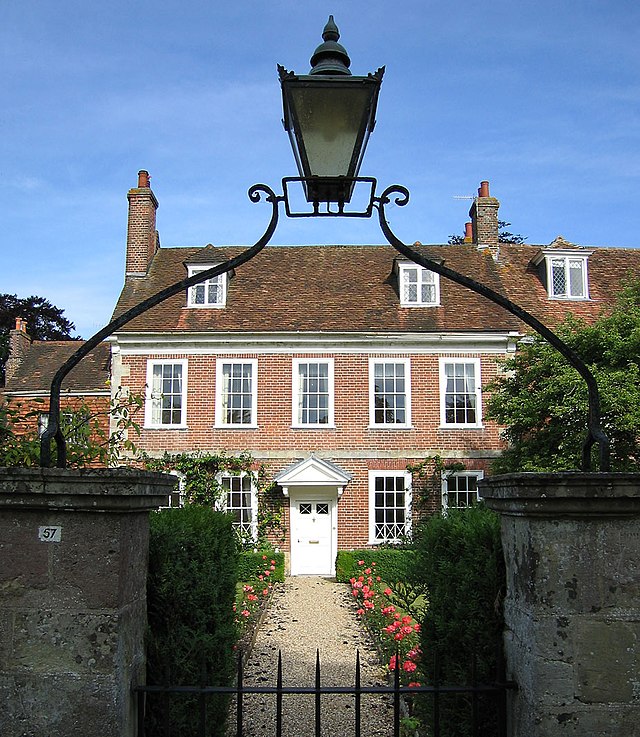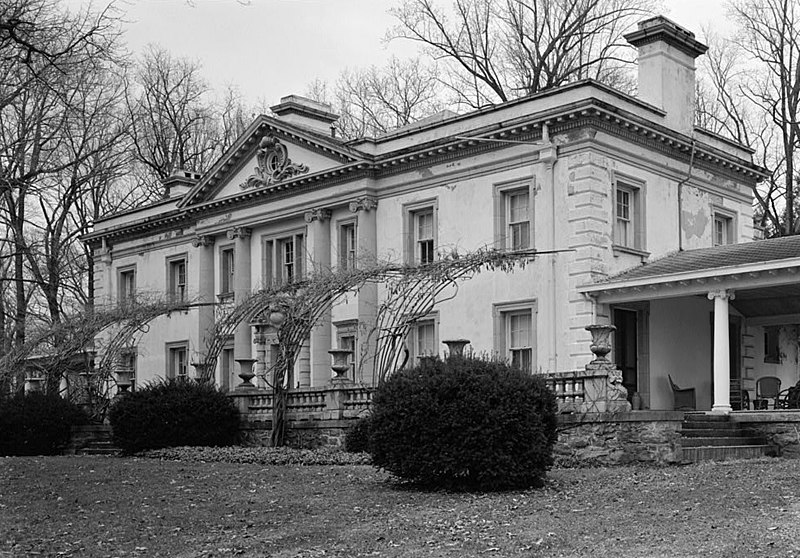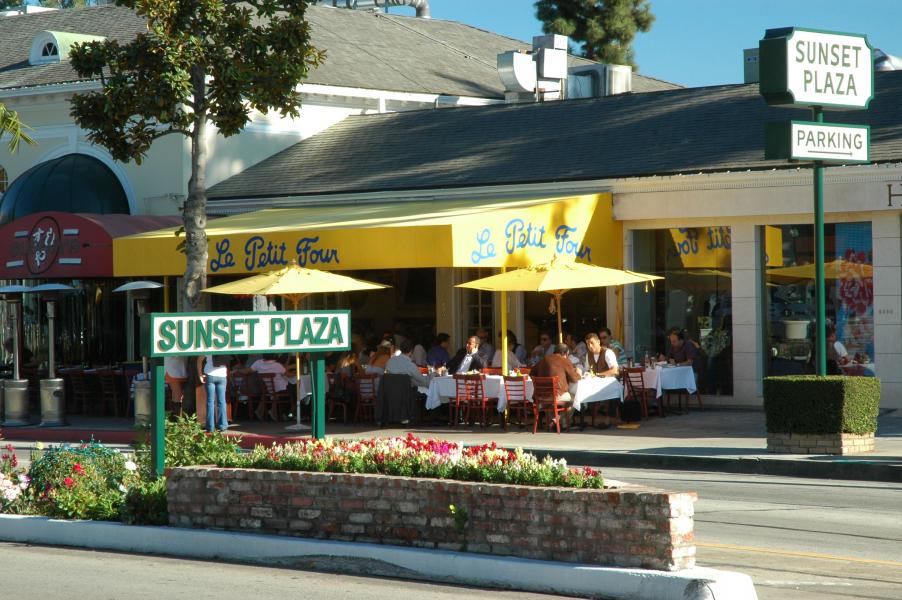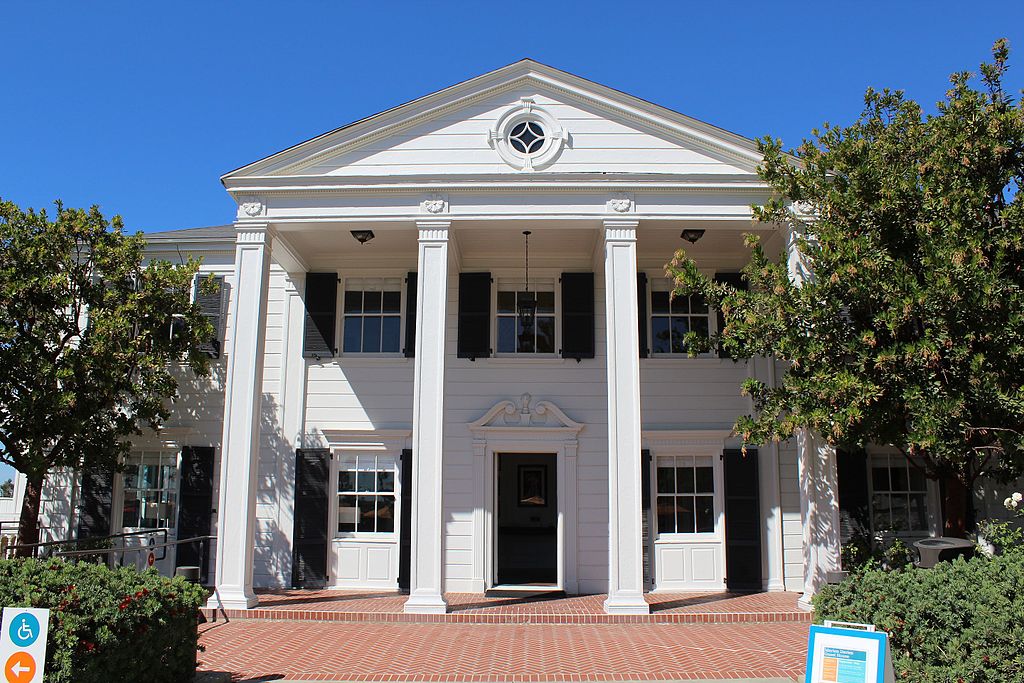Featured image credit: Los Angeles
In our ongoing series about LA’s diverse architecture, we’ve focused on clear styles that have been fairly easy to identify through their distinction. Georgian Revival architecture allows us no such luxury. Not only is it a callback to a pre-defined architecture style (as is the case with any of the “revival” architecture types). But it’s also derived from one that wasn’t all that well-defined to begin with. Despite the blurry lines, Georgian Revival architecture caught on in Los Angeles for its tendency to reference classical architectural styles without pretension.
Rise of the Georges

Georgian Revival architecture recalls the popular, though somewhat vague, Georgian architecture popularized in Great Britain from 1714 through 1830. Georgian refers to the British monarchy of the time when House Hanover was in power. So, why isn’t it called Hanoveran architecture? Because the Hanovers produced a running succession of Georges spanning from George I through George IV with no gaps in between.
Identifying Features of Georgian Revival Architecture
Pretty much any architecture produced during this four-monarch reign was lumped under what was referred to as Georgian architecture. Therefore, the popularity of the style runs parallel to this reign. Yet, there was enough uniformity in the neoclassical characteristics to give us some sort of parameters with which to define a distinct Georgian architectural style.
Identifying features of Georgian architecture (and, by default, Georgian Revival architecture) include:
- An emphasis on symmetry, balance, and proportion
- Influence from classical Greek and Roman styles
- Ornamental aspects, though sometimes muted when compared to classical examples
- Construction favoring two stories
- Rectangular shaping for the overall structure
- Roofing that adopts standard gable or hip designs
- Employment of classically-inspired pillars and columns
- Symmetrically spaced Palladian windows
- Pedimented pavilions at the entry
Georgian Influence Hits the U.S.

So, how did this vaguely defined architectural style find its way to a resurgence in the United States? In the early 1900s, the rapidly developing U.S. needed structure. And it’s through this need that so many architects and designers (and their patrons) began looking back to the classics.
In Great Britain, Georgian architecture had sort of settled into a definition, albeit a loose one. Georgian architecture needed to be purposeful. The architect needed to have some sort of vision at the outset; an intention to recreate the glory days of the four Georges. But since those years were cemented with a plethora of styles, Georgian architecture could be liberally applied. When architects began to seek inspiration in the structures of that time, critics frequently referred to the resulting work as “Neo-Georgian.”
Stateside, Georgian Revival architecture became the more popularly used term. However, Georgian styles were also popularly included beneath the even wider umbrella term, Colonial Revival. The upper and middle classes had adopted a simplified take on classical Georgian architecture that grew to be indicative of the revival.
Examples of Georgian Revival Architecture Around Los Angeles

Los Angeles didn’t really carve out its own unique history with Georgian architecture. It more or less enjoyed the same relationship with the revival style as the rest of the United States. But due to its favor among middle and upper-class residences, you’ll find most examples of residential Georgian Revival architecture in neighborhoods like Bel Air, Brentwood, West Adams, and Hancock Park.
The Eugene W. Britt House
An early example still punctuates West Adams Boulevard: 1910’s Eugene W. Britt House. This three-story brick behemoth of Georgian Revival architecture began as a residence designed by Alfred F. Rosenheim. Over the years it has been renovated to become one of the world’s leading sports libraries; the LA84 Foundation Sports Library.
Sunset Plaza
Another shining example of the style can be found in 1924’s Sunset Plaza. Somewhat lost in the neon glow of the Sunset Strip today, Sunset Plaza consists of four neoclassical buildings designed by Francis Montgomery. Look past the glittering lights and you’ll still find those Georgian features.
Annenberg Community Beach House

It may not be immediately obvious, but the Annenberg Community Beach House features columns in tribute to a former 100-room mansion of Georgian Revival architecture that stood on the site. In 1926, William Flannery designed the beachside mansion on commission from newspaper mogul William Randolph Hearst. Yes, he of Hearst Castle fame. Turns out a castle in San Simeon wasn’t quite enough for the tycoon.
Rosenheim, Montgomery, and Flannery joined the likes of Paul R. Williams, Gordon S. Kaufmann, and Roland Coate as notable practitioners of the Georgian Revival style.
Georgian Revival’s Placement in LA’s Architectural Tapestry
Georgian Revival architecture may not be the most distinct style, nor does it enjoy a unique relationship with LA history. But Georgian Revival structures still make up a significant portion of the city’s diverse architectural quiltwork. Therefore, this vague style has earned its place in our LA Architecture 101 pantheon.
With a brand that says as much as JohnHart’s, Senior Copywriter Seth Styles never finds himself at a loss for words. Responsible for maintaining the voice of the company, he spends each day drafting marketing materials, blogs, bios, and agent resources that speak from the company’s collective mind and Hart… errr, heart.
Having spent over a decade in creative roles across a variety of industries, Seth brings with him vast experience in SEO practices, digital marketing, and all manner of professional writing with particular strength in blogging, content creation, and brand building. Gratitude, passion, and sincerity remain core tenets of his unwavering work ethic. The landscape of the industry changes daily, paralleling JohnHart’s efforts to {re}define real estate, but Seth works to maintain the company’s consistent message while offering both agents and clients a new echelon of service.
When not preserving the JohnHart essence in stirring copy, Seth puts his efforts into writing and illustrating an ongoing series entitled The Death of Romance. In addition, he adores spending quality time with his girlfriend and Romeo (his long-haired chihuahua mix), watching ‘70s and ‘80s horror movies, and reading (with a particular penchant for Victorian horror novels and authors Yukio Mishima and Bret Easton Ellis). He also occasionally records music as the vocalist and songwriter for his glam rock band, Peppermint Pumpkin.


